LG G4 is a strong contender for being the best television of 2024. Thanks to the combination of OLED black and MLA technology, we will get an incredibly dynamic and vibrant image that will surely captivate us completely. LG G4 is also proof that televisions equipped with an OLED panel supported by MLA technology are indeed suitable for viewing in bright rooms. The operating system, while not as open as the competition, allows for many possibilities. Its greatest advantage is the well-known remote with a cursor, which makes controlling the unit (in our opinion) one of the most convenient on the market. Factory colour reproduction, although not at a high level, after undergoing calibration, can be considered almost reference-quality, providing a truly cinematic image. No wonder post-production studios choose televisions from this manufacturer. They uniquely offer such a deep capability to adjust the image, thanks to 3D LUT calibration. It seems that the biggest (and perhaps only) drawback of this television is the tonal transitions, which, while far from perfect, cannot be said to detract from the viewing experience. The remedy is provided by the manufacturer themselves, and enabling the "Smooth Gradation" function will remove the vast majority of any choppiness. LG G4 also performs exceptionally well when watching all kinds of sports or other dynamic scenes. The motion smoother is incredibly advanced and allows for adjustment of smoothness to suit individual needs. Thanks to HDMI 2.1 ports with full functionality and the manufacturer's attention, the tested television will find its place in the homes of many passionate gamers. Each of the essential features works flawlessly, and the low input lag in every mode is very pleasing. In summary, LG G4 is an incredibly versatile television, allowing for entertainment in excellent quality both at night and during the day.
- Matching (Score)
- Our verdict
- TV appearance
- Where to buy
- Contrast and black detail
- HDR effect quality
- Factory color reproduction
- Color reproduction after calibration
- Smoothness of tonal transitions
- Image scaling and smoothness of tonal transitions
- Blur and motion smoothness
- Console compatibility and gaming features
- Input lag
- Compatibility with PC
- Viewing angles
- TV efficiency during daytime
- Details about the matrix
- TV features
- Apps
- Playing files from USB
- Sound
LG OLED G4 vs LG OLED B5
Direct compare
G45 / G42

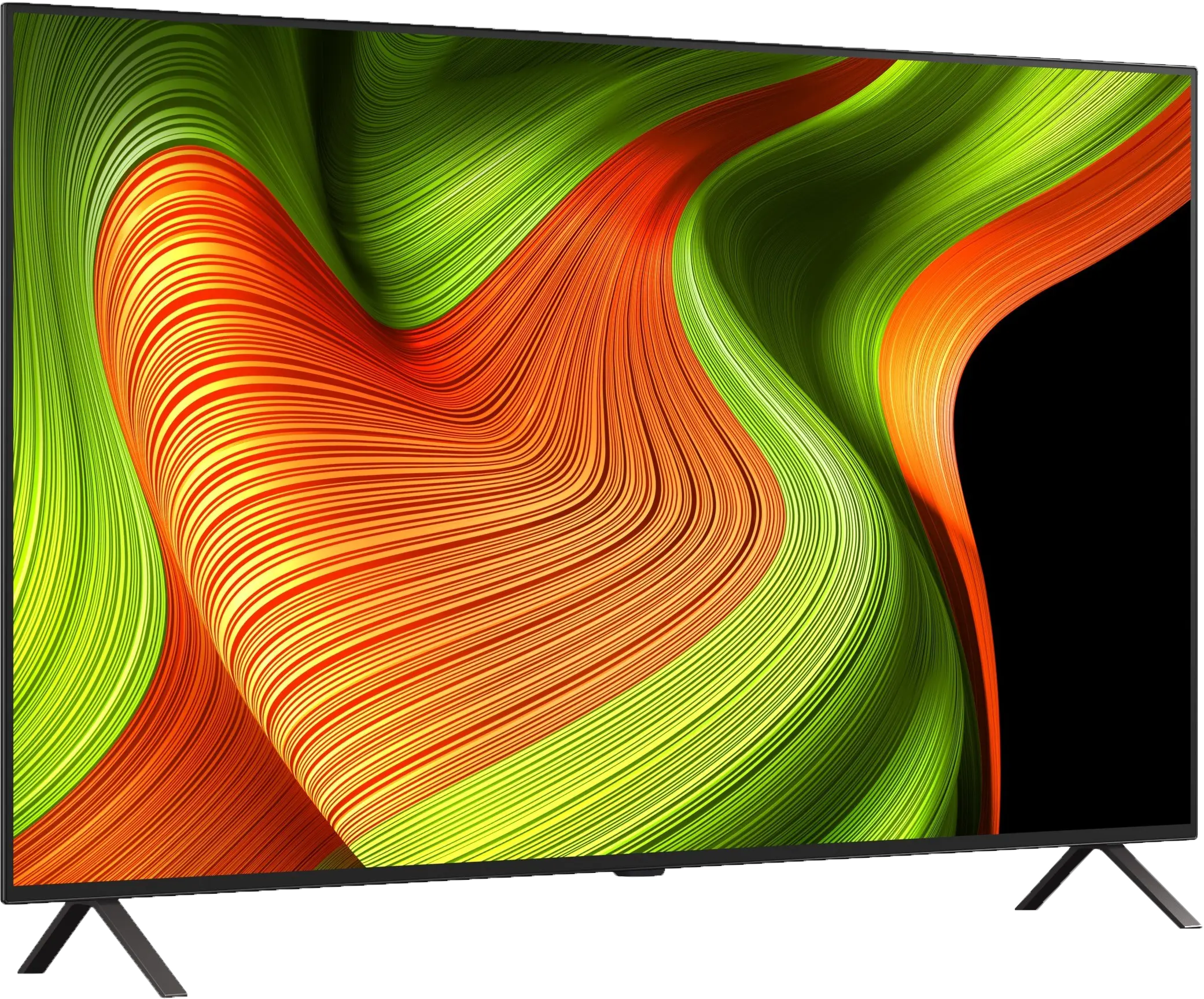
Panel type: WRGB OLED
Resolution: 3840x2160
System: WebOS
Model year: 2024
Complete the survey to find out the result

Panel type: WRGB OLED
Resolution: 3840x2160
System: WebOS
Model year: 2025
Complete the survey to find out the result

Overall rating
8.6
7.8
Movies and series in UHD quality
8.5
7.9
Classic TV, YouTube
9.1
8.6
Sports broadcasts (TV and apps)
9.0
8.5
Gaming on console
9.5
9.2
TV as a computer monitor
8.6
7.6
Watching in bright light
6.0
4.9
Utility functions
9.5
8.3
Apps
8.7
8.7
Sound quality
8.6
7.0
Complete the survey to find out what fits your preferences
Advantages
Phenomenal image fidelity to the director's intent
Reference colour reproduction post-calibration
Very high brightness in HDR content
Outstanding compatibility with consoles and computers
The panel effectively suppresses light reflections
Perfect viewing angles
Perfect black and contrast
Pleasant HDR image
Excellent colour reproduction capabilities
120Hz OLED panel - great motion smoothness
4 HDMI 2.1 ports and full support for gamers (VRR, ALLM, Dolby Vision Gaming, HGiG)
Very low input lag
Proper content scaling and good digital processing
Convenient webOS system with Magic remote
Built-in USB recording function from the built-in DVB-T/T2 tuners
Disadvantages
Visible tonal transitions
Sound of the built-in audio system - it could be better in this class of television
Average brightness and poor performance in bright rooms
No support for DTS formats
Different versions of the remote in derivative models – hard to predict which version we will get
Our verdict
LG B5 is a really good OLED TV that shows you don’t need to spend a fortune for very good quality. It offers deep blacks typical of organic panels, very good colour reproduction – especially after calibration – and pleasant HDR movie watching experiences. All of this makes for evening screenings that can deliver cinematic emotions even without reaching for much more expensive screens. The fluidity of the image and the set of features for gamers also deserve recognition. The 120 Hz panel, low input lag, full support for HDMI 2.1, variable refresh rate, and Dolby Vision Gaming mode make the B5 a very versatile screen – great for both gaming and watching sport. The friendly webOS system, along with the Magic remote, provides convenient access to content and makes operation easier. However, not everything is perfect. Compared to the B4 model, there is a slight drop in brightness, especially in very bright rooms. For some users, the lack of DTS audio support may also pose a problem, which could necessitate some workarounds when connecting Blu-ray players. Still, LG B5 remains one of the most sensible choices for those looking to step into the world of true cinema – without overpaying, but also without making major compromises. It’s a screen that doesn’t need to prove anything – it simply delights the eye with great picture quality and works as it should.
TV appearance




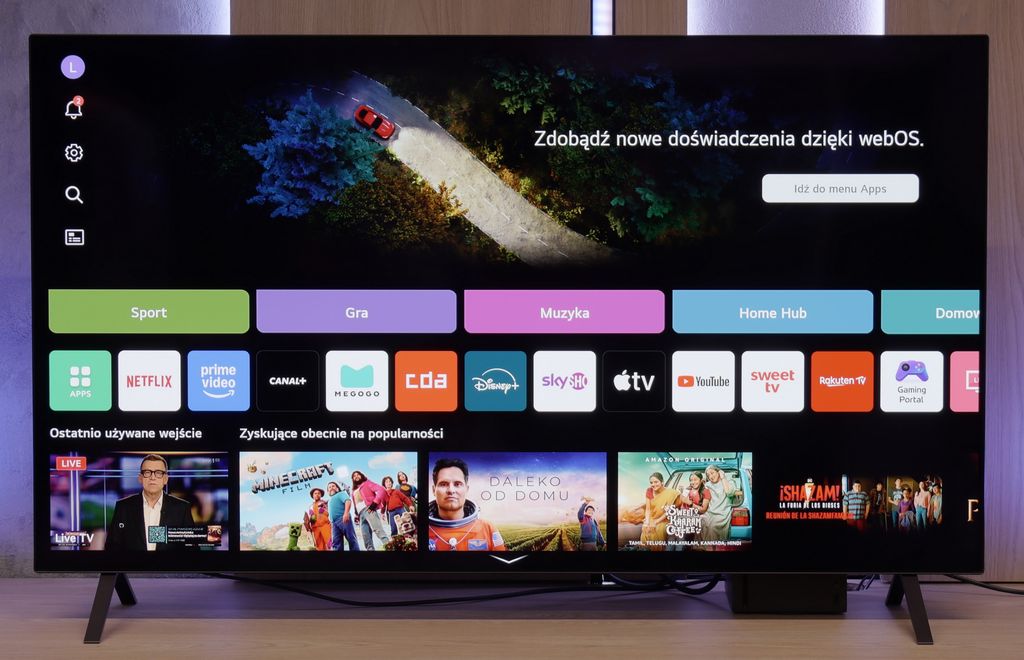
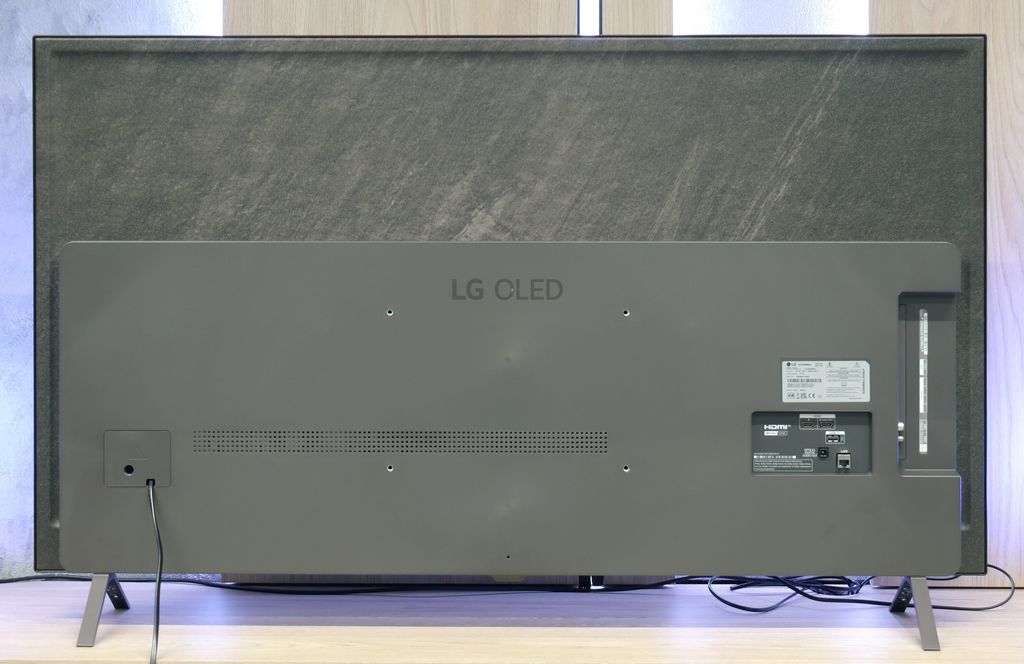

Contrast and black detail
10/10
10/10
Contrast:

Result
∞:1

Result
∞:1

Result
∞:1

Result
∞:1

Result
∞:1

Result
∞:1

Result
∞:1

Result
∞:1

Result
∞:1

Result
∞:1
Halo effect and black detail visibility:


LG G4, with its OLED panels produced for over 10 years, delivers perfect contrast, black levels, and detail reproduction in the darkest scenes. It's worth noting that the panel itself is equipped with MLA (Micro Lens Array) technology, which LG showcased just a year ago with the launch of its predecessor. The use of an organic panel not only allows for achieving pitch-black blacks but also provides extraordinary immersion and a three-dimensional effect in the image, which is hard to find even in the best Mini LED TVs. Such image quality is closely linked to OLED panel technology, as each pixel is controlled by an electrical impulse rather than shading filters on the panel. Therefore, if we want to achieve black, the pixel is simply turned off. This is very evident in test images, where the spotlight provides high brightness while being perfectly separated from each other. The situation remains unchanged in the challenging scene from "Sicario 2," where no imperfections from zone dimming can be seen, which we might encounter in LCD TVs.
If you're looking for changes compared to last year's LG B4, we’ll clear up any doubts straight away – you won’t find any in this category at all. And that’s a good thing. Because how do you improve something that is already close to perfection? The LG B5, as a WOLED organic panel television, offers black scenes as dark as tar and contrast that’s hard to find even in the most expensive LCD screens. The screen is as clear as a bell – no bleeding, no streaks, no halo effects that can ruin the atmosphere in cinematic scenes. Here, everything is in its place. Details separate from black with surgical precision, nothing blurs together, even in the most demanding sequences from films like The Revenant or Oblivion. This is the type of television that can truly enchant you, especially when the room goes completely dark. When the lights go out, the LG B5 takes centre stage – and it does so wonderfully. In these conditions, OLED shines the brightest, and even top-end LCD models – despite advanced dimming and hundreds of zones – simply fall behind.
HDR effect quality
7.8/10
6.2/10
Luminance measurements in HDR:

Result
1474 nit

Result
1467 nit

Result
1403 nit

Result
1441 nit

Result
850 nit

Result
587 nit

Result
593 nit

Result
628 nit

Result
589 nit

Result
470 nit
Scene from the movie “Pan” (about 2800 nits)


Scene from the movie “Billy Lynn” (about 1100 nits)


Static HDR10


Dynamic: Dolby Vision
Dynamic: Dolby Vision


HDR luminance chart:
LG OLED B5
Luminancja HDR
Luminance of RGB colors
LG OLED G4
Luminancja HDR
Luminance of RGB colors
LG G4 guarantees an incredibly vibrant HDR effect, placing the television firmly at the top of the rankings. The highest model in the manufacturer's 2024 portfolio, equipped with the second generation of microlens technology (MLA), has achieved a maximum brightness level of 1474 nits in real scenes. The only area where the product of the Korean manufacturer may fall short compared to LCD televisions with Mini LED backlighting is during a full-screen scene featuring a lot of white. If we were to disregard the latter scene, the average result would be even higher. It's also worth mentioning scenes with very fine details, where each one shone at full intensity, which is not as evident in non-OLED televisions. The combination of such brightness and wide coverage of the DCI-P3 color space ensures that HDR materials are more engaging than ever before.
LG B5 is a moderately bright OLED TV. Regardless of the scene – it can generate about 500 nits of peak brightness. And interestingly, it does this even in full-screen shots flooded with white, where most OLEDs usually struggle. So, is this screen suitable for HDR films? Yes – absolutely, because such brightness really allows you to feel the magic of HDR effects. However, it’s worth noting that compared to last year's B4 model, the new B5 is darker – by about 100 nits. It may seem like a small amount, but at such average peak values, it makes a significant difference. Fortunately, the TV makes up for it with another strength – excellent coverage of the DCI-P3 and BT.2020 colour gamuts. This means HDR films look truly vibrant, lively, and impressive even in more demanding scenes.
Factory color reproduction
8.4/10
8.2/10


Factory Mode
After calibration


Factory Mode
After calibration
The best factory mode in terms of colour reproduction was "Filmmaker". This is the one we used during our tests. Let's check how its characteristics looked before the calibration process. Taking a closer look at the white balance first, we can notice a significant dominance of red and green colour. As a result, the image had a warm yellow tint. This is the kind of characteristic we usually observe in "Cinema", "Filmmaker", or similarly named modes. The effect of such a colour balance was clearly visible in both SDR and HDR content, which, after switching from "Standard" mode, was distinctly yellowed. Now let's move on to two graphs that are responsible for brightness characteristics, and consequently, image contrast. The first one (Gamma), representing materials with a standard colour palette, performed decently. For most of the time, the midtones and bright whites were represented very accurately, however, it noticeably lost the darkest details which blended into a black patch. On the other hand, HDR materials, represented by the EOTF curve graph, exhibited a significant drop in contrast due to a strong boost in brightness. There was also an issue with the colours themselves as seen on the "ColorChecker" graph since they were noticeably undersaturated.
B5 was tested in Filmmaker mode and… we’d love to see more TVs like this right out of the box. Seriously. The white balance is very well set – there’s practically nothing to nitpick. Well, if you really want to, you might notice a slight deficiency in blue, which can make the overall picture have a slightly yellowish tint. But that’s just our editorial nitpicking. Most of you probably won’t even notice. We also have minimal reservations about brightness management in HDR format. The EOTF curve – which is responsible for how the TV distributes brightness across the scene – sits just below ideal. In practice, it may happen that the darkest parts of the image appear too dark and simply… disappear. But these are details that only come out in measurements. Generally: we are impressed. But we also know that LG TVs respond very well to professional calibration. You can extract nearly reference-quality picture from them, so – although it’s already very good out of the factory – we took the liberty to go a step further and fine-tune everything to the max.
Color reproduction after calibration
9.5/10
9.1/10



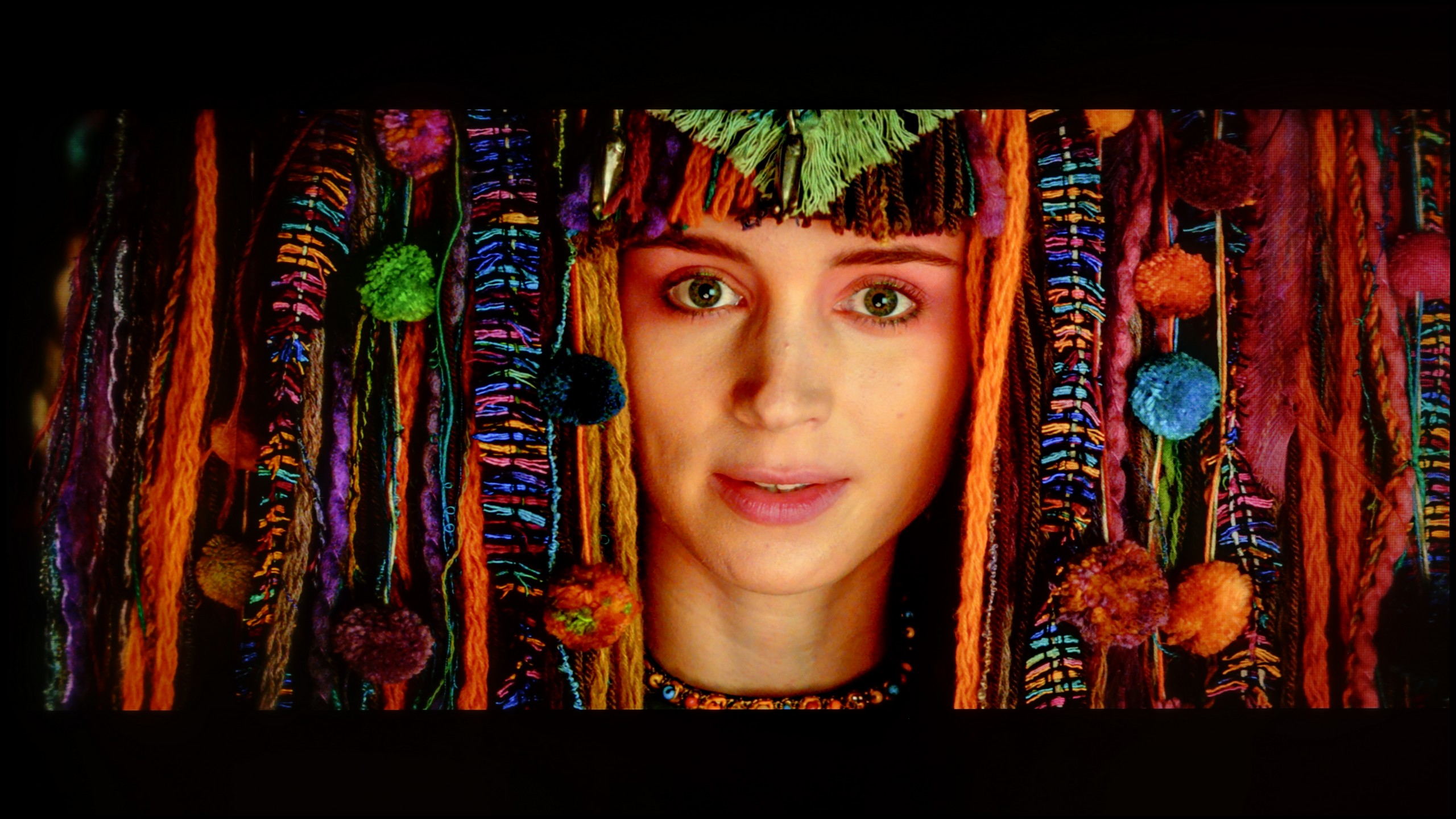
The manufacturer has been implementing extensive support for the calibration process in their LG televisions for many years. Therefore, we used 2- and 20-point grey scale adjustments along with an advanced CMS (Color Management System) and got to work. As you can see, thanks to the procedure carried out, each of the parameters has significantly improved. The use of tools has resulted in extremely beneficial effects, which include: studio colour reproduction, recovery of details in dark areas of the image, appropriate brightness characteristics, and proper colour saturation. Thus, we have maximised our approach to the reference image, or the one that the film director saw on the preview monitor. It is worth noting that the LG G4 televisions are the only ones that allow for even deeper intervention in image quality due to the capability to calibrate with 3D LUT matrices. However, this solution is recommended only for post-production or graphic studios.
We have to admit that we didn't have much work with the LG B5. It's one of those TVs that look good right from the start, but after calibration… they can really impress. The white balance was nearly perfect – down to a level of errors invisible to the human eye, unless you're a professional colourist with a magnifying glass at the screen. We also managed to control the TV's tendency to slightly dim the darkest details, especially in HDR scenes. After proper tuning, everything looks cohesive: blacks remain deep but don't swallow information. Highlights maintain a natural sparkle, and colours are true to the director's vision. This is truly one of those models that show you don't have to spend a fortune to have an almost reference-quality image. If you can opt for professional calibration – it's definitely worth it for the B5.
Smoothness of tonal transitions
6.2/10
7.2/10





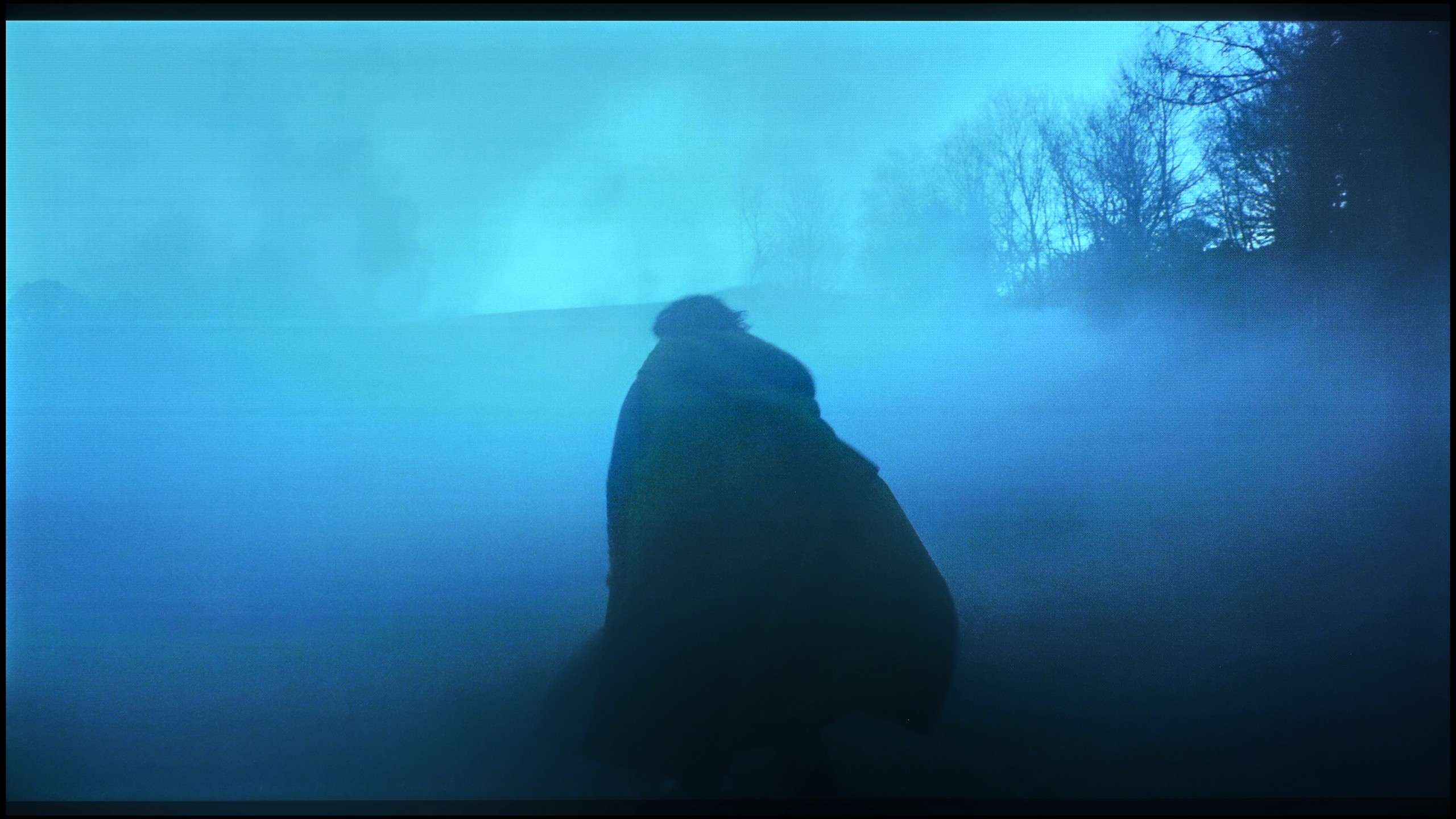

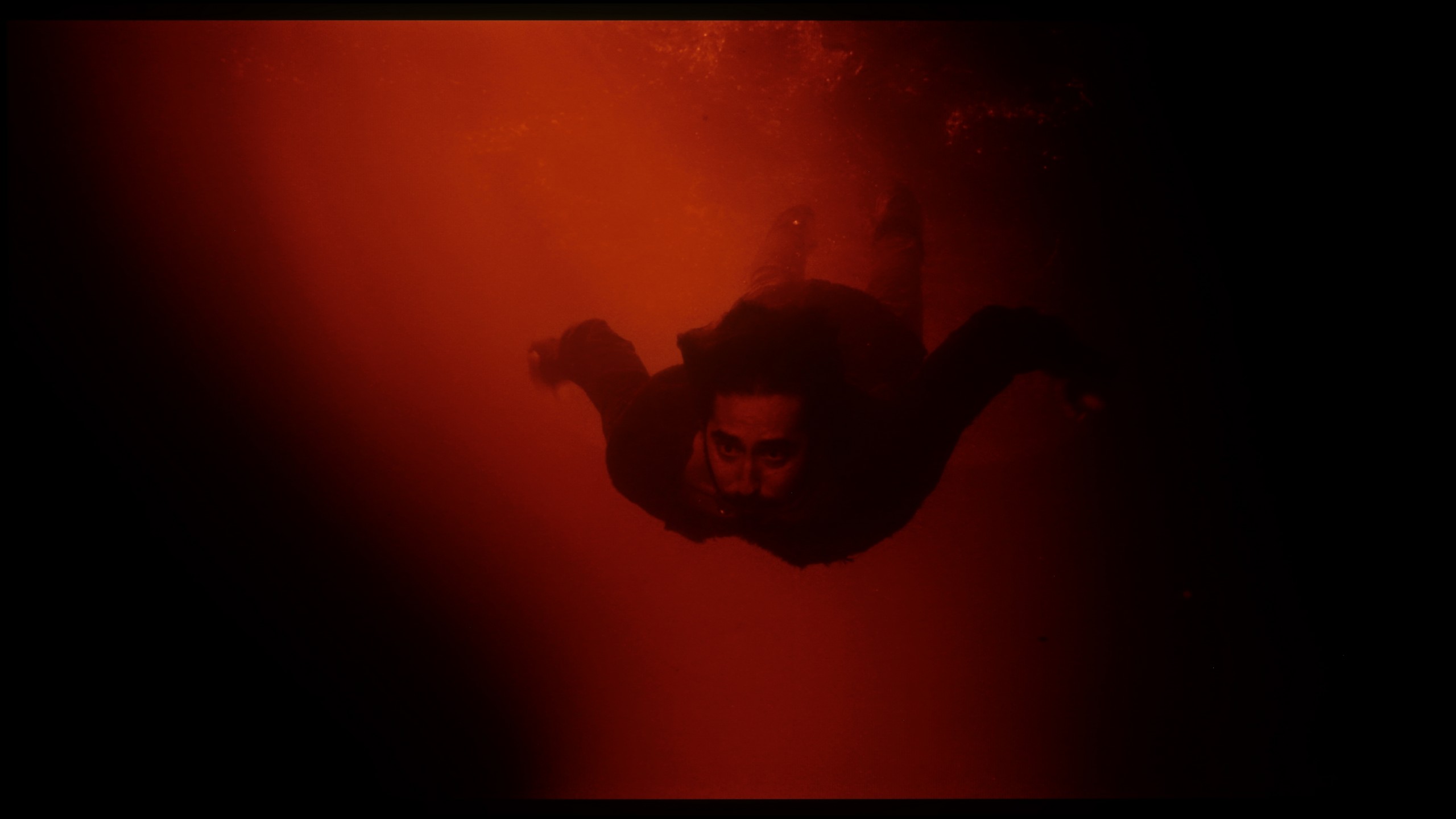




The tonal transitions presented on LG G4 are not among the top performers. Each scene played from a BluRay disc with 10-bit HDR exhibited noticeable choppiness in the colour transitions. This was particularly evident in the case of the film "The Green Knight," where issues related to posterisation were especially pronounced. This effect could also be observed in films with moderate to high brightness, such as "The Martian" or "Kingsman," which is rarely seen in televisions (especially of this class), which took us by surprise. Such results suggest that in scenes with low luminance and a lot of black, this issue will be troublesome, even for a layman.
LG B5 handles colour gradation quite decently. In bright scenes, where we have smooth transitions between skin tones, the sky or background, the TV blends colours seamlessly and without hiccups. At first glance – it’s good, particularly considering the price. But just reach for more challenging material – those darker, more demanding scenes with a lot of subtle transitions – and the problems begin. Small artifacts appear, false contours, slight thickening. It’s still not at a level that blinds or distracts from the plot, but the difference compared to more expensive WOLED models – and even more so QD-OLED screens – becomes noticeable.
Image scaling and smoothness of tonal transitions
8.2/10
7.5/10
Smooth transition function

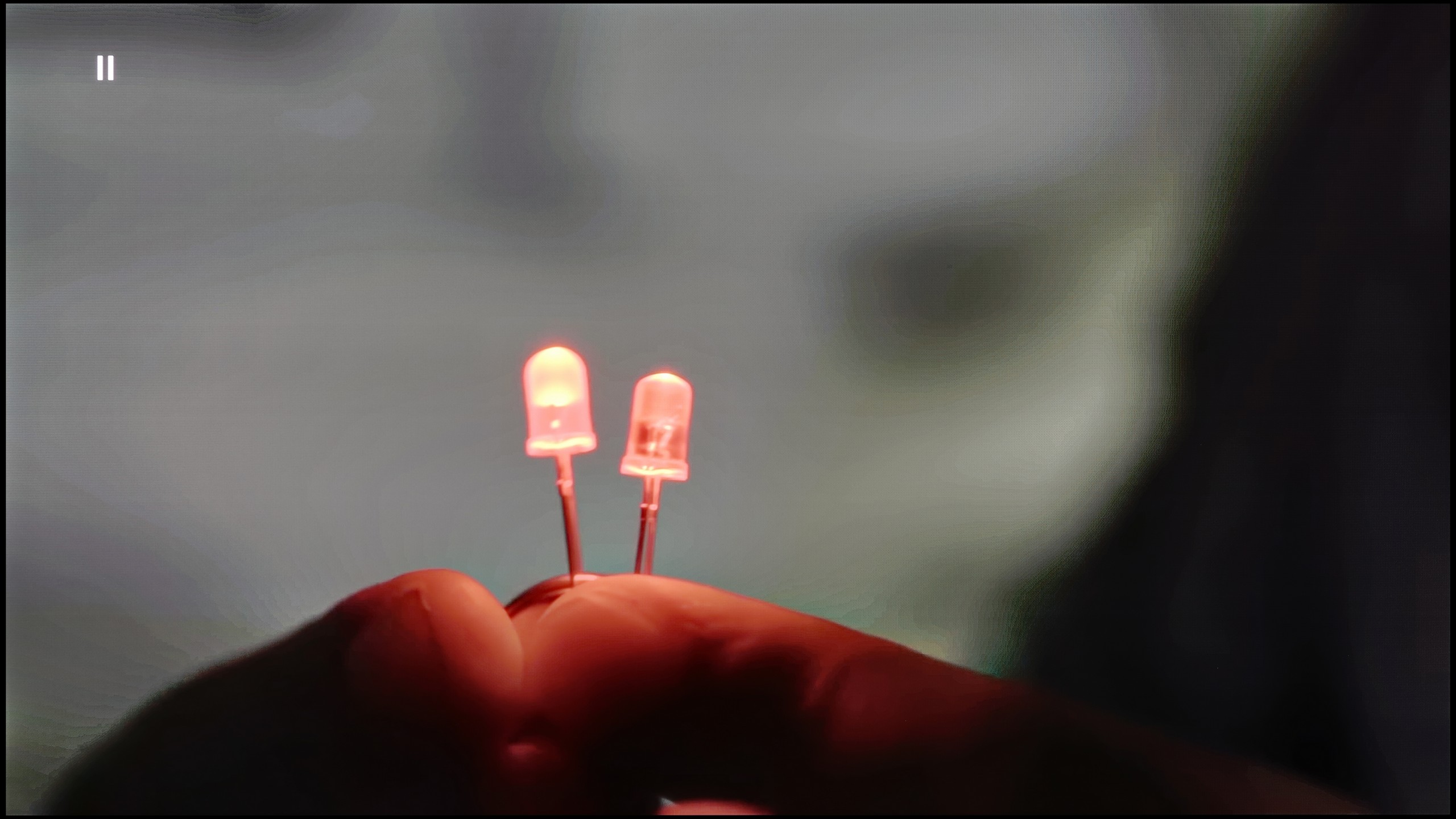
Image without overscan on the SD signal


The tested television did not perform well with content rich in tonal transitions, resulting in a strong posterisation effect. However, there is a partial remedy for this ailment. The manufacturer has equipped the LG G4 with a smoothing system called "Gentle Gradation," which we can apply at three levels: Low, Medium, and High. Each of these options guarantees quite high smoothing effectiveness on bright colours, though low on darker ones. We recommend primarily using the first one due to the fact that the other two interfere with directorial intentions, removing film grain.
When watching lower-quality content, the efficiency of the television during upscaling is extremely important. The image from the tested television is sharp and clear. However, attention should be paid to the jagged edges of fine details and minor issues around characters, such as the creation of a halo effect, which occurs due to the sharpening imposed by the LG G4 even when the slider is set to the lowest value, which is 0. It is worth noting that this is a change in relation to the LG G3, which did not impose such strong image sharpening, even when the appropriate slider was set to position 0.
LG B5 really surprised us positively in terms of handling lower quality content. Thanks to the enhancement and smoothing features, HD or even SD materials come to life. Importantly – when this option is turned on at the "low" or "medium" level, we don’t get the impression that the image is artificially softened or overly smoothed. Details remain in place, film grain doesn’t disappear, and the edges of objects don’t look washed out 😉. It’s a really useful tool – especially if you’re watching free-to-air TV, archival materials, or content from YouTube in lower resolutions. The picture is clear, consistent, and simply pleasant to the eye.
Upgrading as such works very well – even low-quality content is reproduced with surprising fidelity. Unfortunately, it’s not without a minor hiccup. Although the menu has an option to turn off overscan, the television still has issues correctly displaying very low-resolution images. It’s a minor detail, but when watching older materials – it can be annoying.
Blur and motion smoothness
8.5/10
8.5/10

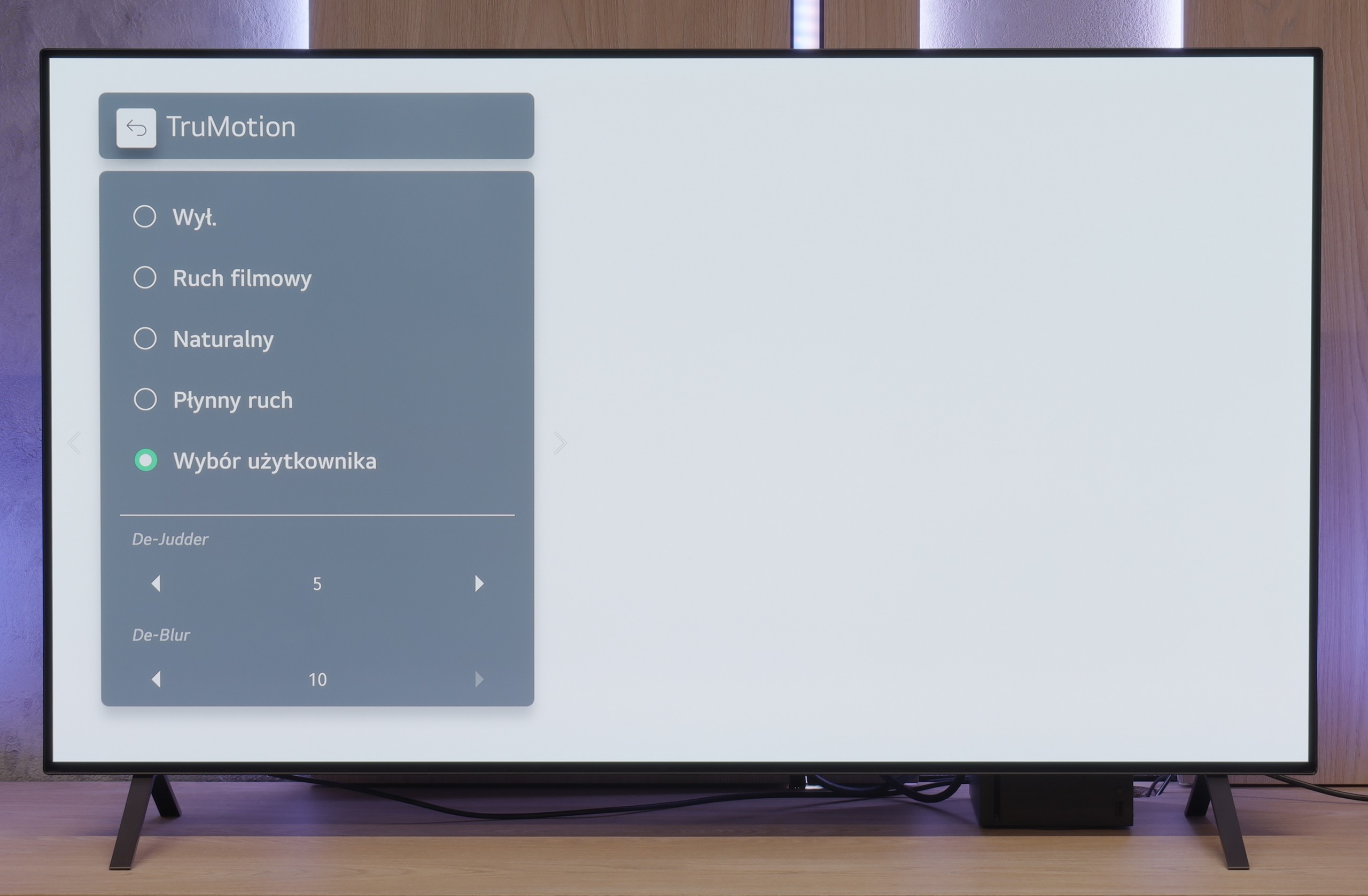
Blur (native resolution, maximum refresh rate):



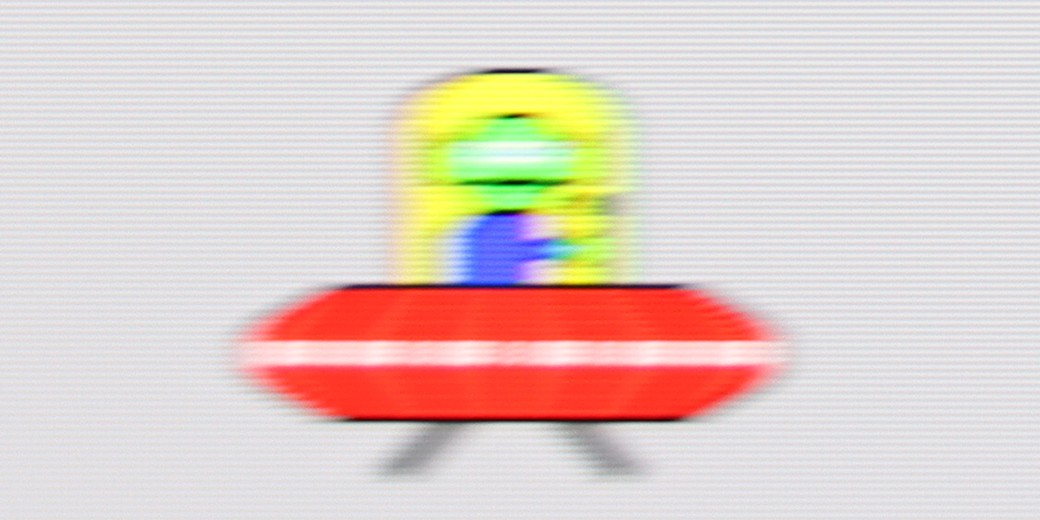
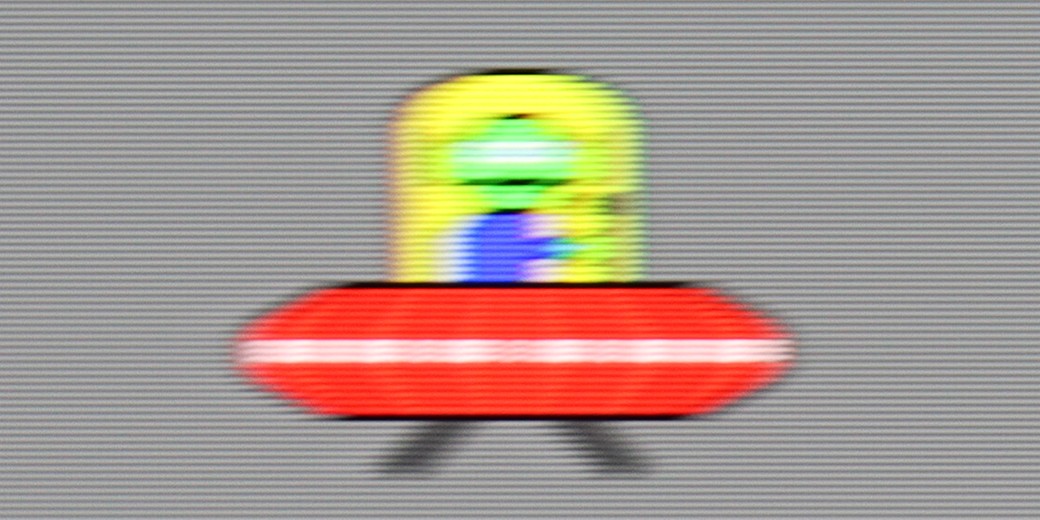

Blur (BFI function enabled):
Image flickers in this mode



The maximum refresh rate that we can set on the LG G4 is 144 Hz. Naturally, this is only possible by connecting the LG G4 to a very powerful PC. Otherwise, we will be operating at a maximum refresh rate of 120 Hz, which is recommended if we primarily want to watch sports or content with high motion dynamics. For those who require high fluidity of image, the manufacturer has implemented a multi-level motion smoother called "TrueMotion". It has been divided into two separate sliders that adjust the sharpness of moving images (De-Blur) and judder (De-Judder). Both sliders can be set in the range from 0 to 10, with each increment affecting the degree of smoothing, so everyone can find their sweet spot.
The LG OLED G4 panel features an average response time of 0.78 ms (which directly results from our measurements), allowing for an incredibly clear image, unattainable by LCD televisions, which have response times of even several milliseconds. This is clearly visible in the "UFO Test" images, showing the absence of any trailing blur behind the object. Furthermore, the LG OLED G4 test showed that the television offers the ability to precisely adjust motion smoothing functionality, allowing users to choose the ideal level of image interpolation. We particularly appreciated this during fast-paced action in video games, where the LG G4 performed exceptionally well, minimising any blurriness. Thanks to OLED technology, this model eliminates so-called ghosting, ensuring that the image remains sharp even in the most dynamic sports or movie scenes.
LG B5 is a TV with a 120 Hz OLED panel. It may not sound as impressive as the marketing terms "144 Hz" or "165 Hz" commonly found in gaming monitors, but honestly? The smoothness is still excellent. The picture is sharp, fluid, and simply enjoyable to watch – even when there’s a lot happening on screen. The organic panel does its job – the pixel response time is almost instantaneous, which means there’s no risk of ghosting or blurring that can ruin dynamic shots. Sports, fast-paced games – everything looks clear and distinct.
We also have the classic LG motion smoother, TruMotion. It allows you to smooth out movies shot at 24 frames – in other words, most of what you watch on Netflix or from Blu-ray discs. If you set lower values on the “De-Judder” slider, you’ll get a picture closer to the cinematic experience – with a slight judder, but without artificiality. Higher settings? Soap opera effect guaranteed. Fortunately, LG gives you the choice, and you can tune everything to your liking.
Console compatibility and gaming features
10/10
10/10
- ALLM
- VRR
- VRR range40 - 144Hz40 - 120Hz
- Dolby Vision Game Mode
- Correct implementation of HGIG
- 1080p@120Hz
- 1440p@120Hz
- 4K@120Hz
- Game bar

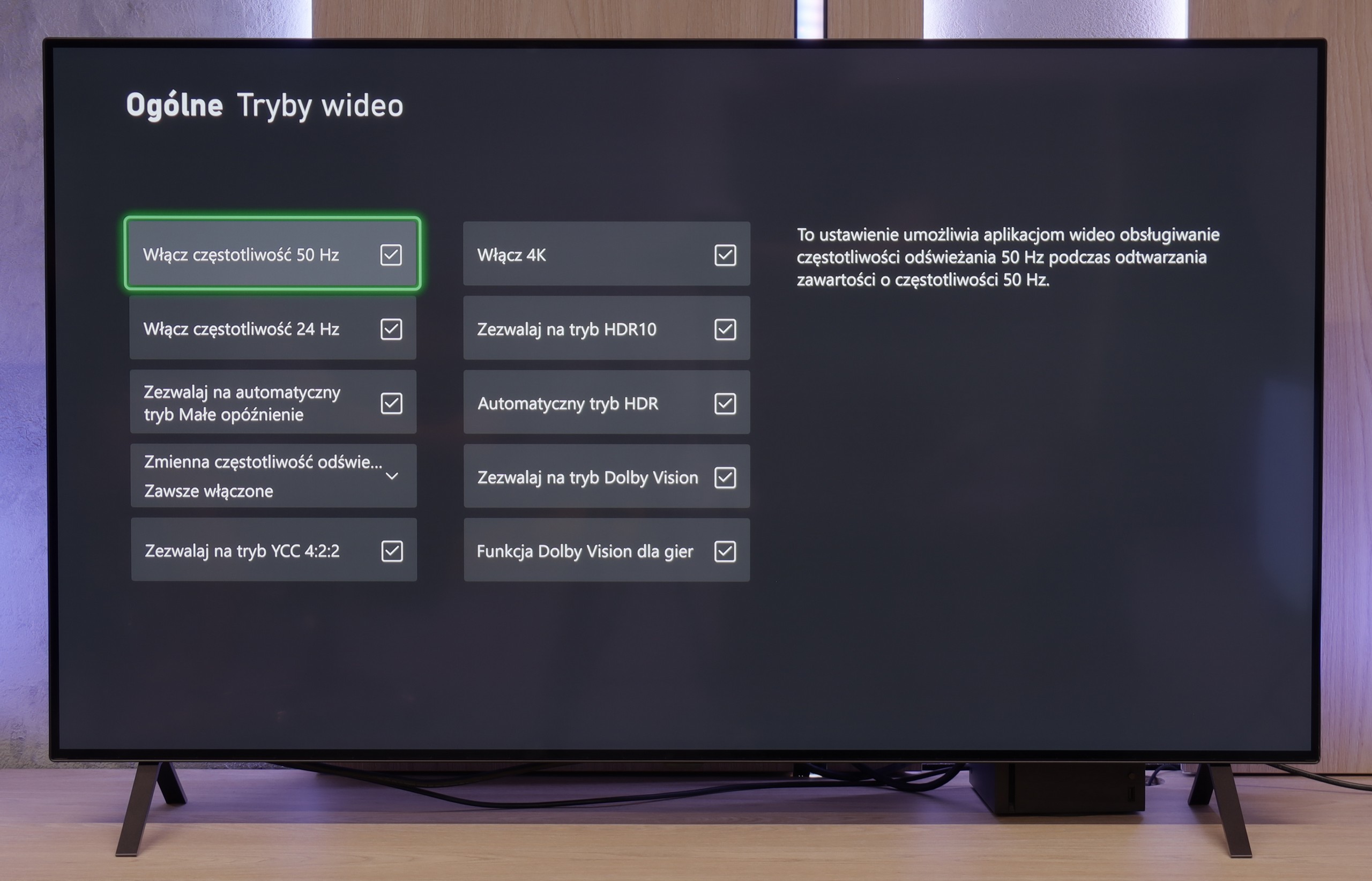

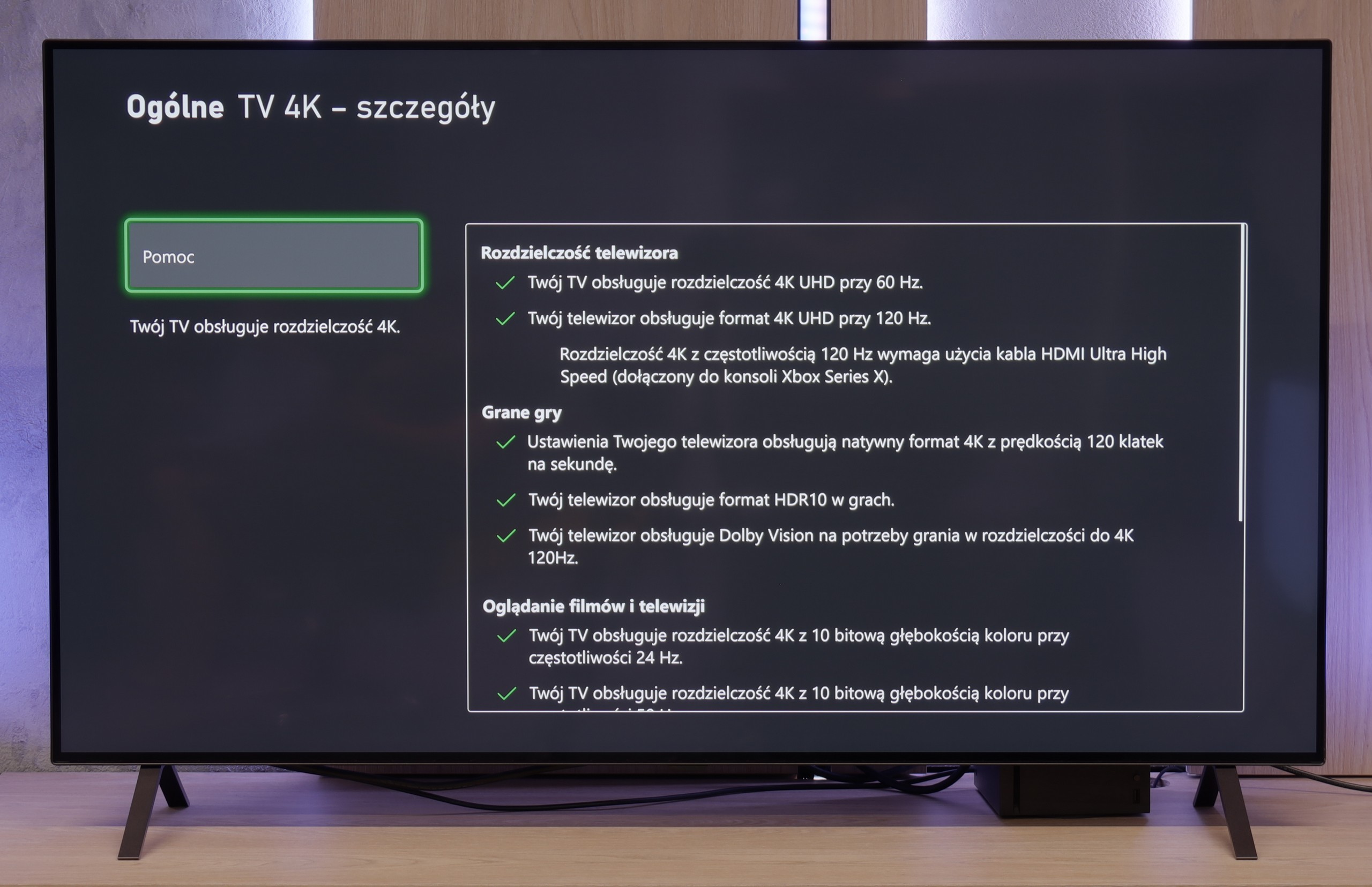

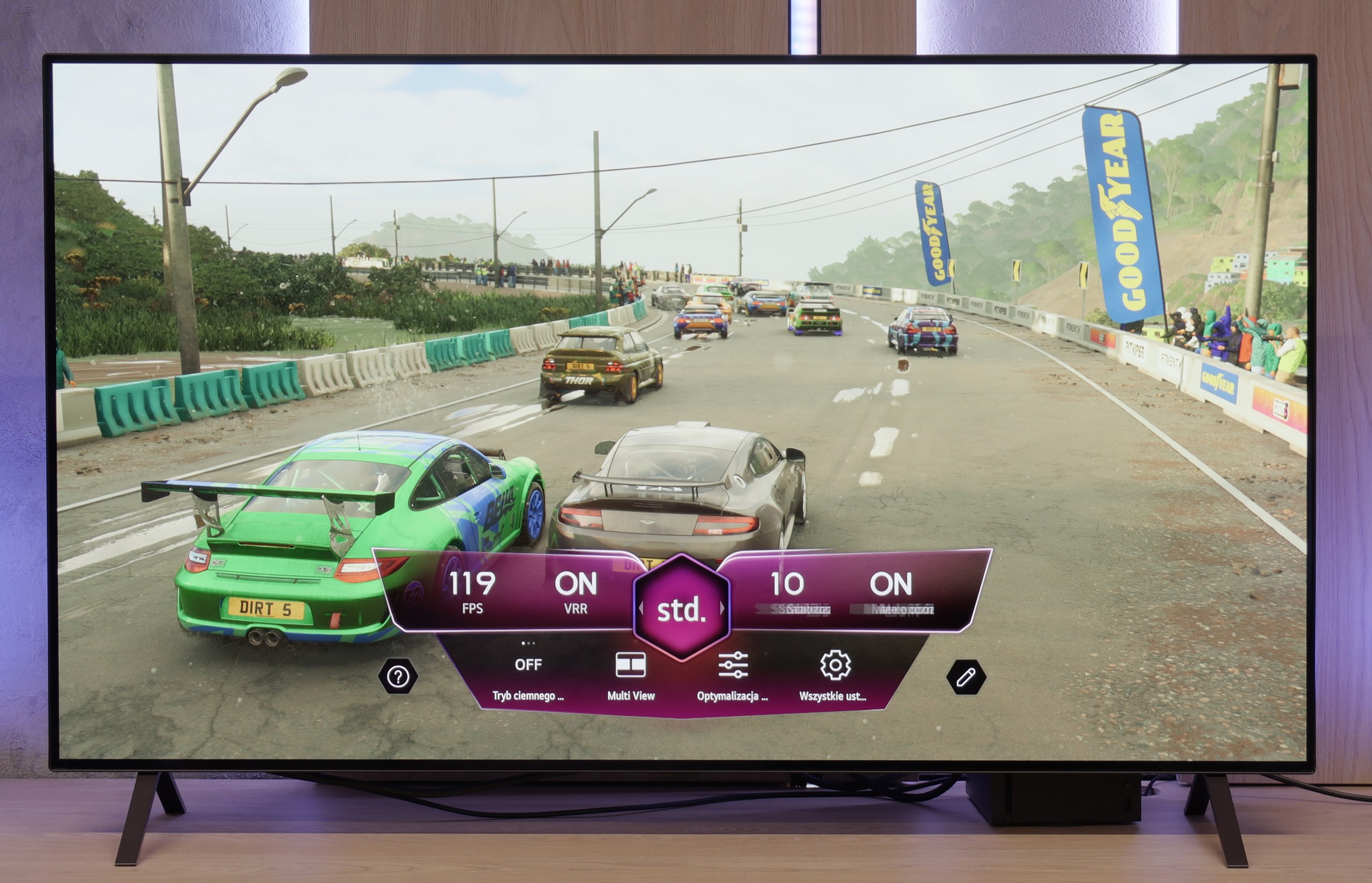

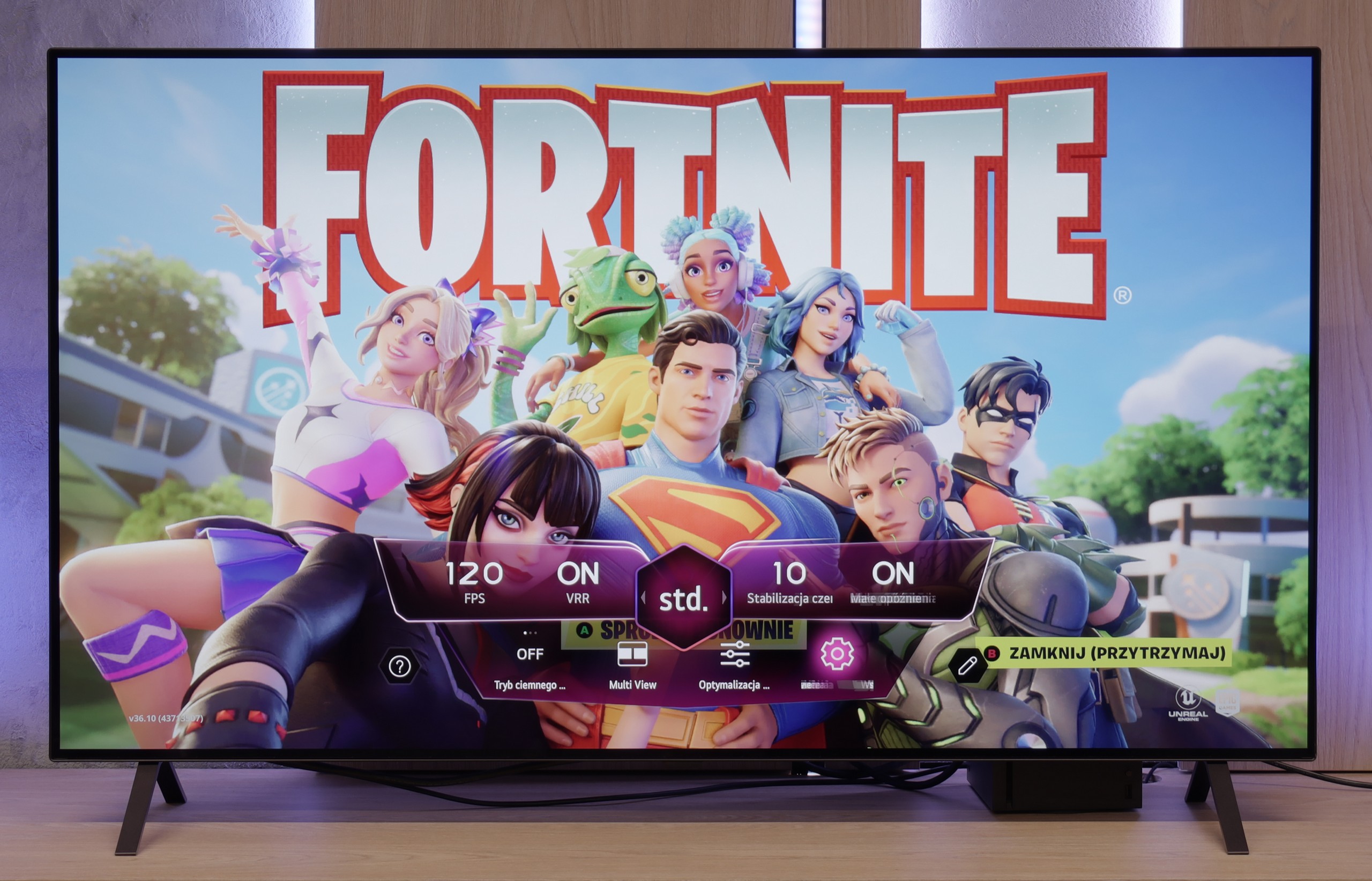
The LG G4 television supports all features that make up the HDMI 2.1 standard. During testing, each feature activated without any issues, which allows us to consider the television as designed for gaming. Its performance will certainly be appreciated by both console users and those connecting the LG G4 to a computer. It’s also worth mentioning the proper implementation of the HGIG (HDR Gaming Interest Group) mode, which ensures that games mastered to brightness levels beyond the maximum luminance of the LG G4 will correctly map tones, keeping the game image true to the original.
A nice touch is the presence of a special GameBar that we can bring up at any moment to check game parameters, but most importantly, to change them quickly. More importantly, turning on VRR technology does not degrade contrast, which is often a problem in televisions with local dimming or Mini LED backlighting. Of course, this is thanks to the OLED panel itself, characterised by pixel self-emissiveness. As a journalistic note, we will only mention a slight grey flicker, which, however, is somewhat normal when VRR is enabled.
In summary, the LG G4, like practically all OLED televisions, is an ideal product for all kinds of gaming and online competitions. With full HDMI 2.1 ports with a complete bandwidth of 48 Gbit, features such as VRR, ALLM, G-Sync, FreeSync, or HDR Dolby Vision gameplay will bring a lot of joy.
There are already a few TVs on the market with the "for gamers" label that don't really understand what that means. The LG B5 is not one of them. Everything here is spot on – there are four HDMI 2.1 ports, 120 Hz, there’s VRR and ALLM, and there’s also a Game Bar that's actually useful, not just looking good in the brochure. You plug in a console – it works. You set it to 4K at 120 Hz – it works. You have an Xbox and want to play in Dolby Vision – it works too. And it's not just "theoretically supports," it actually turns on, looks good, and you don't have to fiddle with settings for half an hour. Plus, there’s the HGiG picture mode, which LG has implemented correctly – meaning HDR in games doesn't turn the screen into a strobe light, but shows exactly what it should. There are no surprises, no strange limitations, no "buts." And you know what? That's how it should be. Cheers to the LG B5!
Input lag
10/10
9.9/10
SDR
HDR
Dolby Vision
The input lag of the LG G4 is impressively low in every scenario. Even the most dedicated gamers will surely appreciate the very low input lag at demanding 4K 120 Hz settings with HDR, which is just 5 ms. It's also worth noting that the lag at the same settings, but with Dolby Vision HDR enabled, remains unchanged, which is not as obvious with the competition. Therefore, it deserves the highest rating and recommendation.
Here we won’t be going on about it – the LG B5 simply has great input lag. For 60 Hz content, it achieves results below 10 ms, and for 120 Hz it even drops to around 5 ms. These are values that can’t be reasonably criticized. It just works instantly, without delays, without surprises. Well... almost. Because as usual, there’s a slight asterisk with the Dolby Vision Gaming mode. In this mode, the response time slightly increases. It's nothing dramatic – they’re still very low values, likely unnoticeable while gaming – but if you’re only playing tournament titles and fighting for every millisecond on your XBOX, it’s worth keeping in mind.
Compatibility with PC
8.6/10
7.6/10

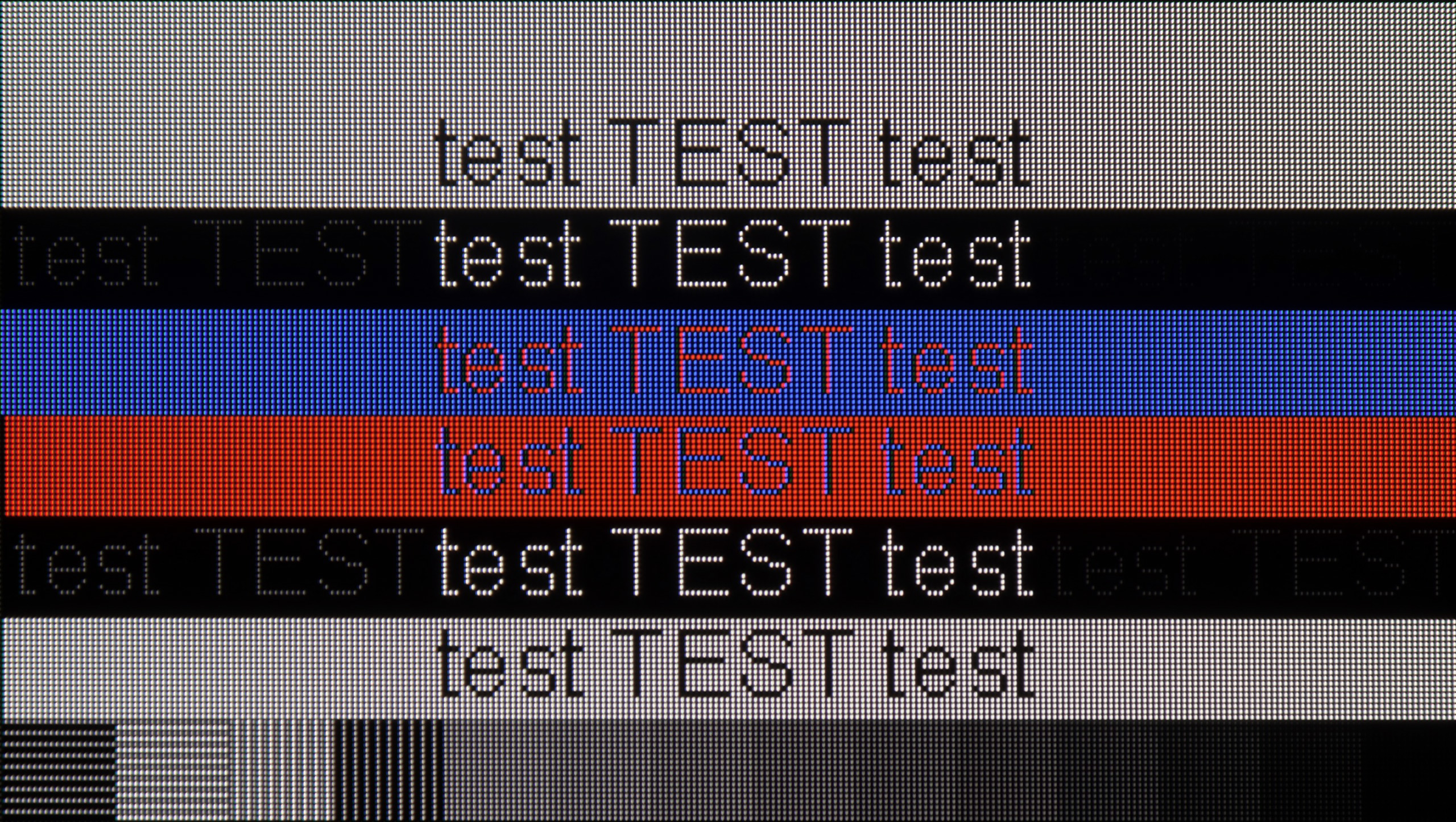
LG G4 paired with a PC performs excellently, thanks to an incredibly low latency of just 5 ms, which is practically instantaneous response between the mouse, eye, and screen. A crucial aspect while working on the screen is the readability of text, which is very good in the case of the tested television.
The RWBG pixel arrangement has no significant impact on the display of fonts or letters, which is a considerable advantage over Samsung's QD-OLED matrices. Users of both Windows-based PCs and macOS will surely be pleased with the performance on the tested LG G4 television.
LG B5 is a television that communicates well with a computer. You won't find gaming features like 144 or 165 Hz here, but is that really necessary for anyone? Thanks to the 120 Hz panel, low input lag, and G-Sync support, it's actually a very good screen for gaming on PC. No stuttering, no tearing, with instant response.
But it's not just for gaming. The B5 can also be quite comfortable for... simply working. The television correctly supports chroma 4:4:4, so fonts are legible, interfaces are clear, and your eyes won't hurt from blurry text. This isn't obvious, even among more expensive models. However, there is one "but" – and this applies not only to the B5, but to every OLED with a WOLED panel. The RWGB subpixel arrangement can cause a slight shadow at the edges of fonts. This isn't something that stands out from the couch. It's more likely to be noticed by someone sitting close to the screen and spending half a day in Excel.
Viewing angles
9.7/10
7.4/10
The undisputed advantage of OLED screens equipped with MLA technology is their performance when viewing from various angles. To the naked eye, there are no noticeable changes, regardless of where we are watching from. This type of screen maintains consistent brightness, saturation, and white hue, unlike LCD matrices or OLEDs without micro-lens technology (MLA). The only matrices that can match them are those produced by Samsung Displays, using quantum dots, namely QD-OLED.
In terms of viewing angles, the LG B5 performs very well – exactly as you would expect from a WOLED panel. No matter from which side you sit, the picture retains its quality. Colours don't fade, contrast doesn't drop off sharply, and details remain clearly visible. However, it must be honestly added that this is not the level of QD-OLEDs from Samsung Display. Those manage to hold colour saturation even better under extreme angles. But if you don't plan on watching films while sitting at a 90-degree angle – the B5 is more than sufficient. It's one of those TVs that is just pleasing to look at – from any side.
TV efficiency during daytime
6/10
4.9/10

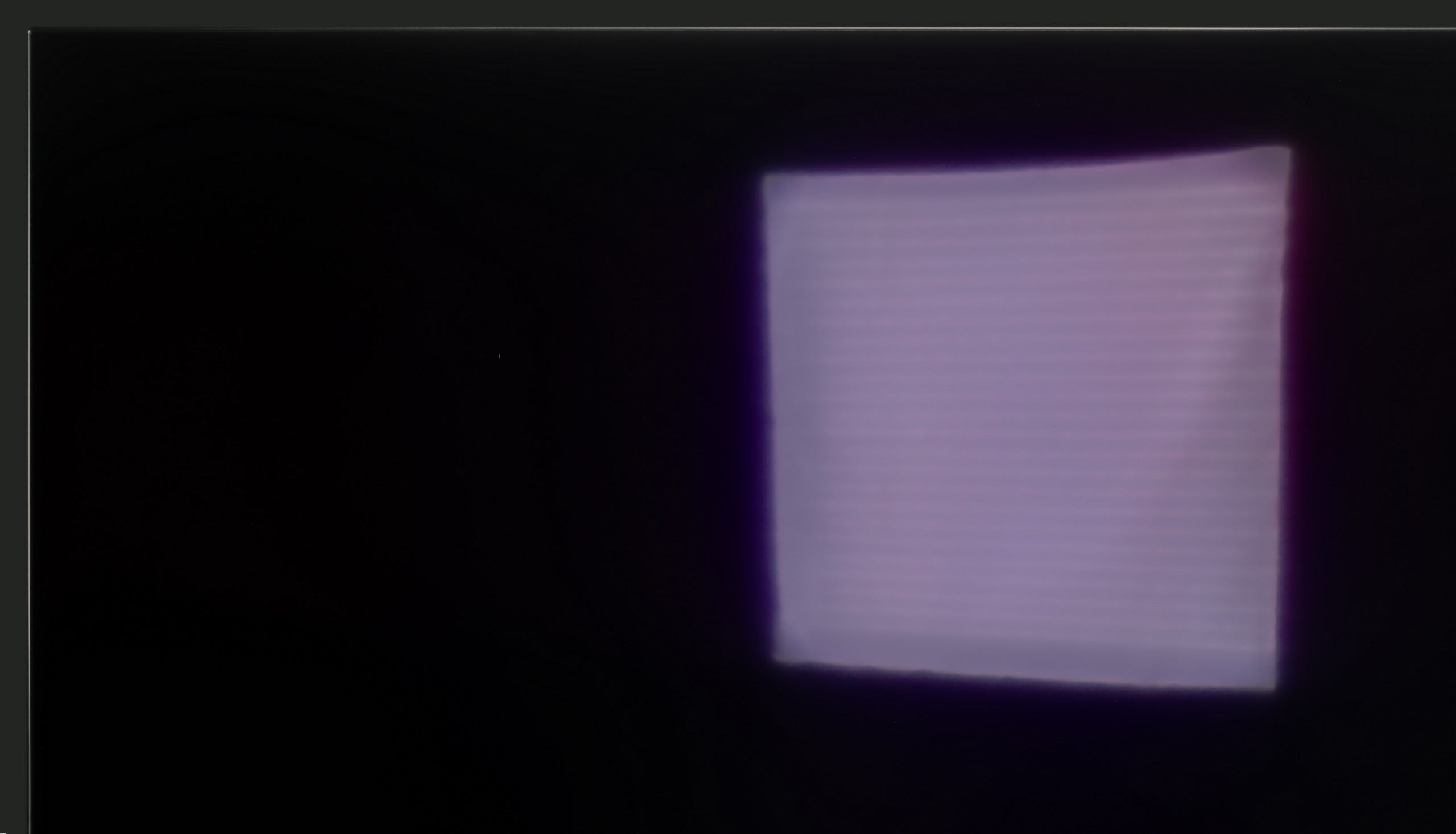

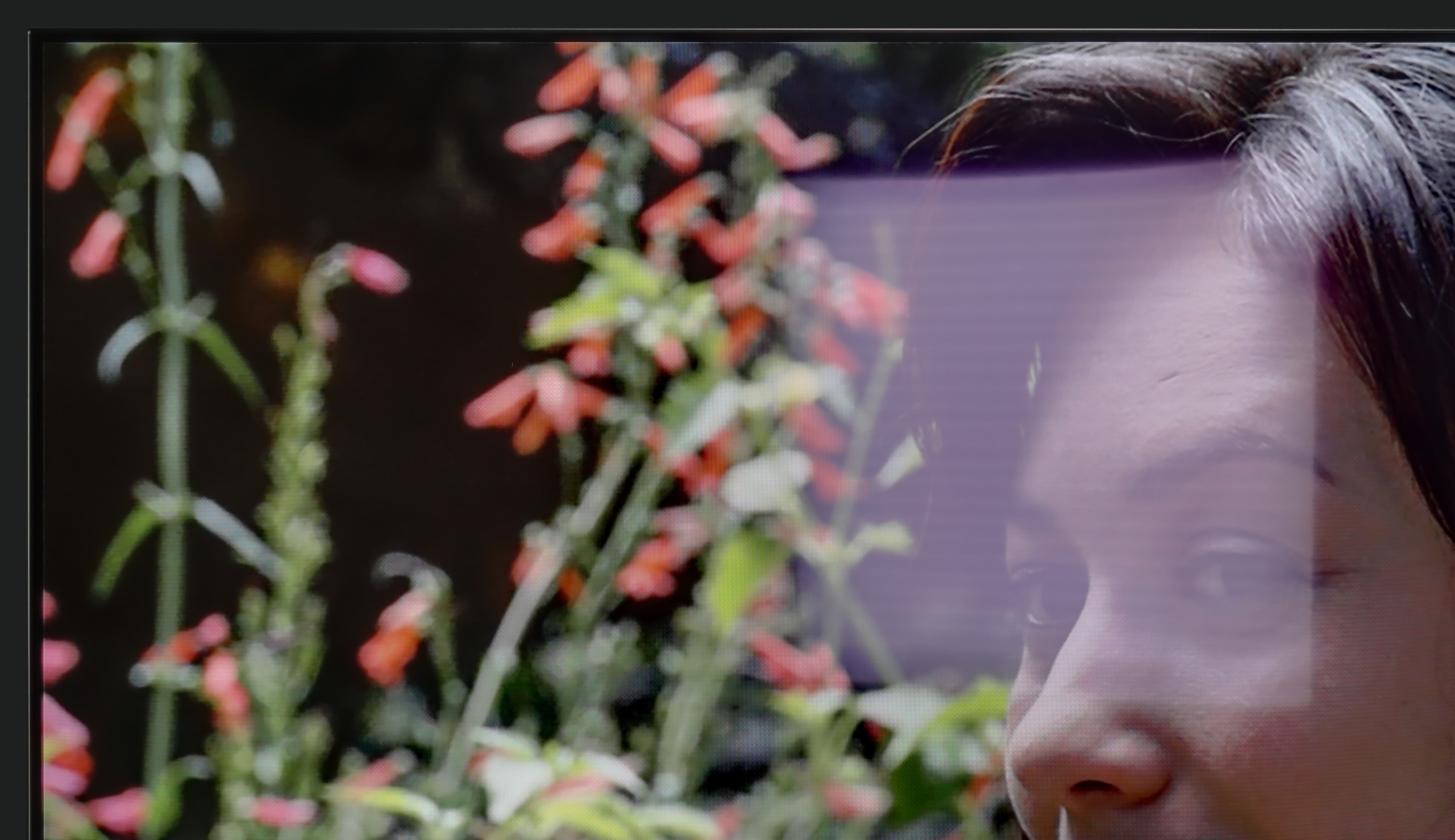
Matrix brightness
Average luminance SDR
LG OLED B5: 279 cd/m2
LG OLED G4: 482 cd/m2
The glossy coating of the display in LG G4, although it may sound like a downside, is actually quite the opposite. Thanks to it, the LG G4 television maintains very high efficiency and effectively suppresses all reflections, "holding" them only at their source. It's also worth mentioning the quality of black during the day, which in the case of WRGB displays produced by LG Displays is outstanding. OLED MLA displays, despite their many advantages, are somewhat inferior in this case, but still better in the context of competition from Samsung, whose QD-OLED displays fade under light. The combination of brightness at around 500 nits and the glossy coating allows for daytime viewing of the television, unless the user has a living room with large glazing.
The LG B5 is a television that feels best after dark. But when the sun comes in, it becomes a bit of a challenge. The brightness of this model is rather average, and the anti-reflective layer… also average. There are no special coatings here that deal well with reflections or very bright daylight. So if you're planning to place this television opposite a large, uncovered window – it may simply be hard to see anything.
Fortunately, there is something worth praising: the glossy WOLED panel maintains good colour saturation. Even in difficult conditions, the image doesn't fade or become "washed out," as can happen with some television models. In general, it's watchable, but if you're looking for a television specifically "for a bright lounge room," the B5 shouldn't be your first choice.
Details about the matrix
Subpixel Structure:

Panel uniformity:

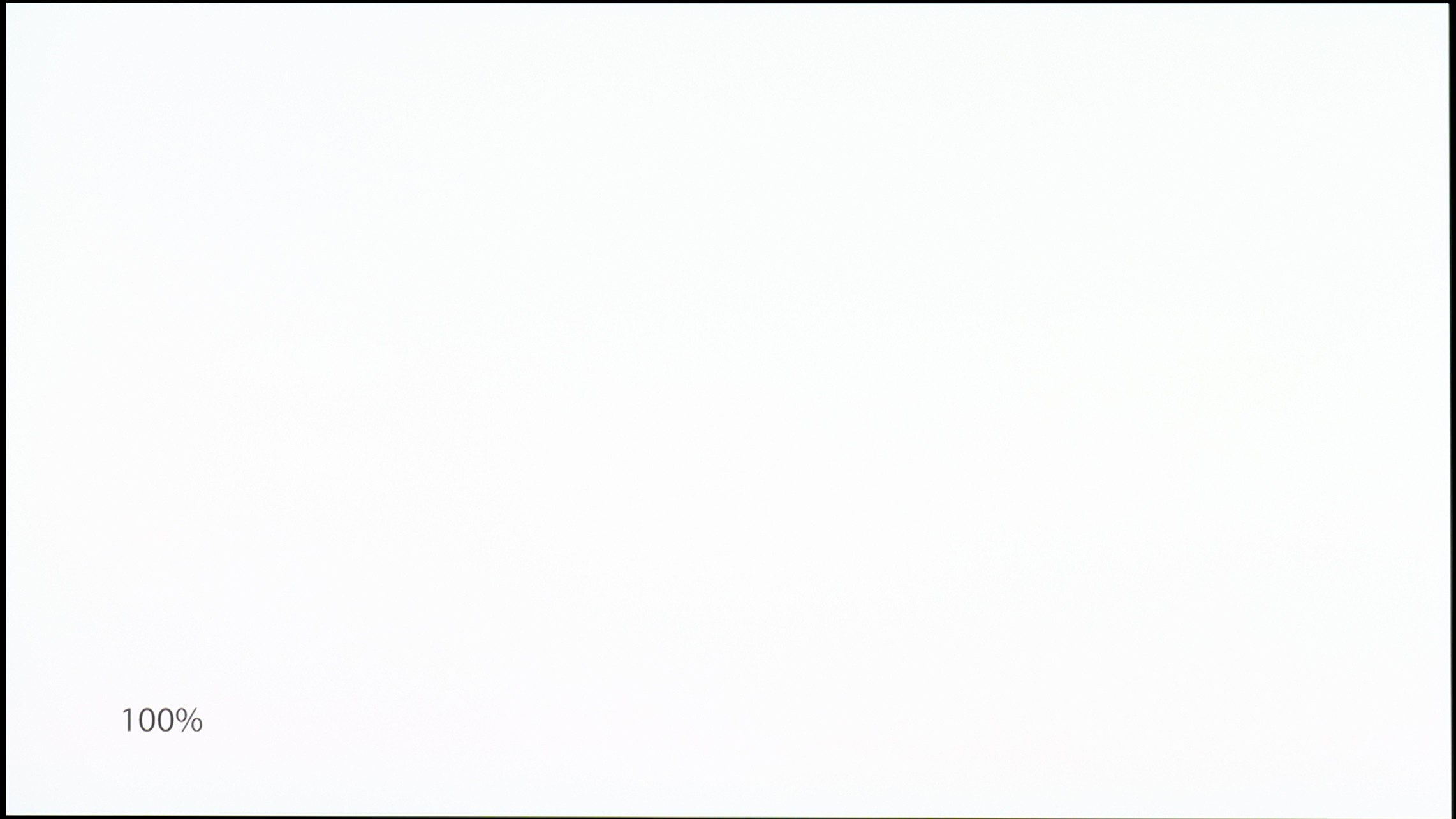
TV features
9.5/10
8.3/10
- HDMI inputs0 x HDMI 2.0, 4 x HDMI 2.1 48Gbps0 x HDMI 2.0, 4 x HDMI 2.1 48Gbps
- OutputsToslink (Optical audio), eARC (HDMI), ARC (HDMI)Toslink (Optical audio), eARC (HDMI), ARC (HDMI)
- Network InterfacesWi-Fi 2.4GHz, Wi-Fi 5GHz, Ethernet (LAN) 100MbpsWi-Fi 2.4GHz, Wi-Fi 5GHz, Ethernet (LAN) 100Mbps
- TV receptionDVB-T, DVB-T2, DVB-S, DVB-S2, DVB-CDVB-T, DVB-T2, DVB-S, DVB-S2, DVB-C
Classic features:
- Recording to USB (terrestrial TV)
- Recording programming
- Picture in Picture (PiP)
- RF remote control (no need to aim at the screen)
- Backlit remote control
- Teletext
- Audio only mode
- Possibility to connect Bluetooth headphones to the TV
- Possibility to simultaneously use Bluetooth headphones and the TV speaker
Smart features:
- AirPlay
- Screen mirroring (Windows Miracast)
- Wyszukiwanie głosowe
- Voice search in native language
- Ability to connect a keyboard and mouse


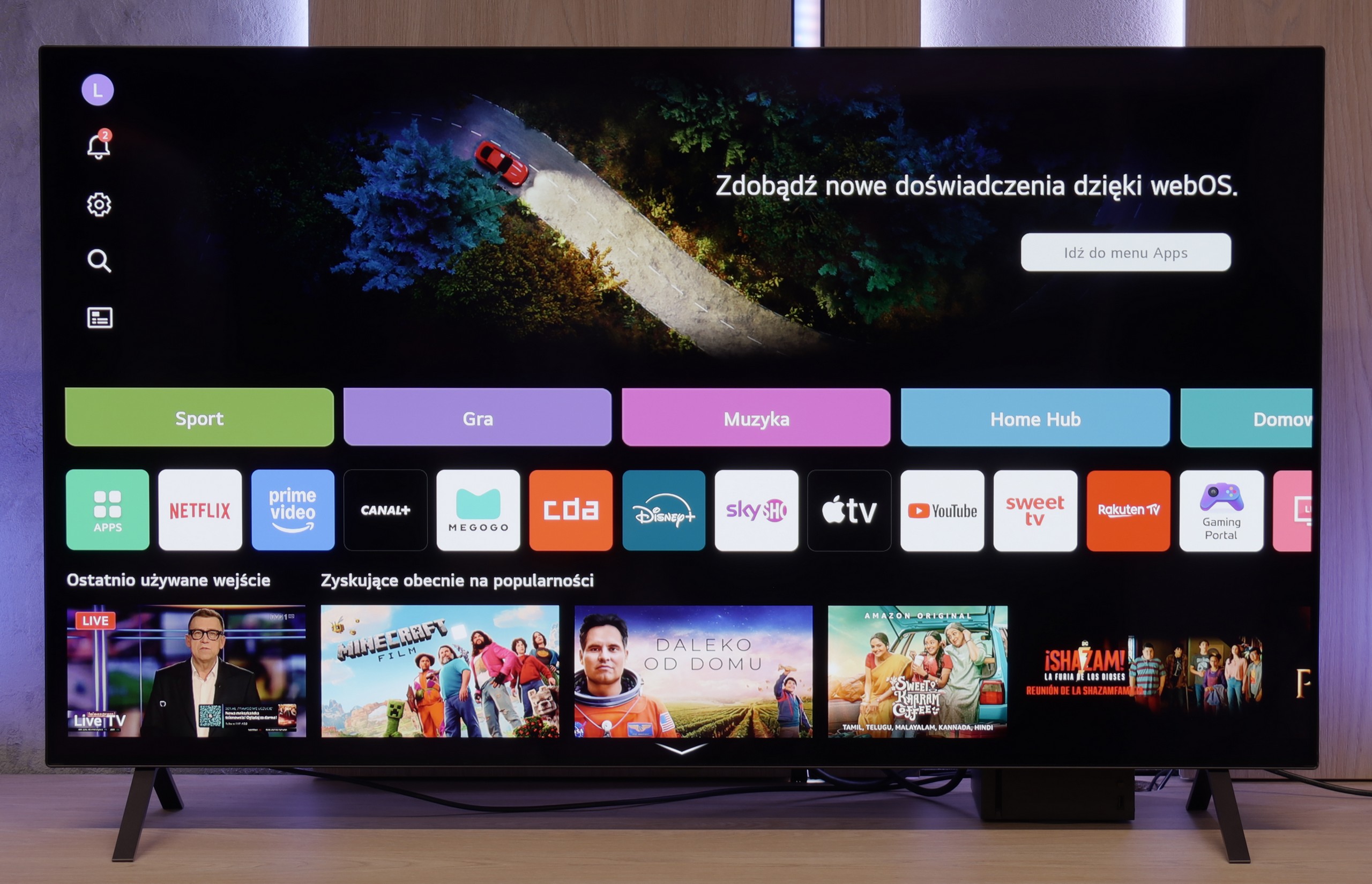
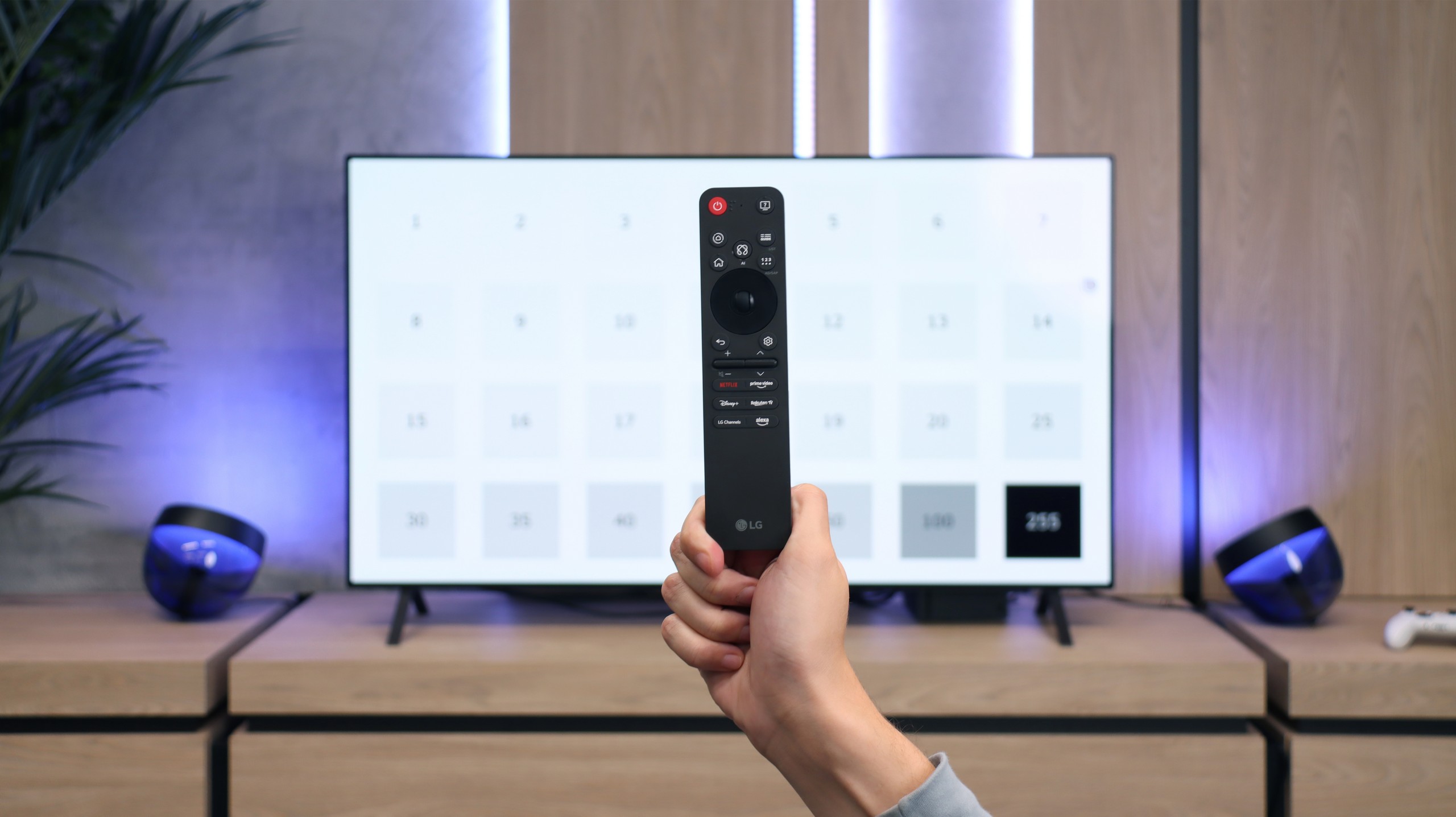
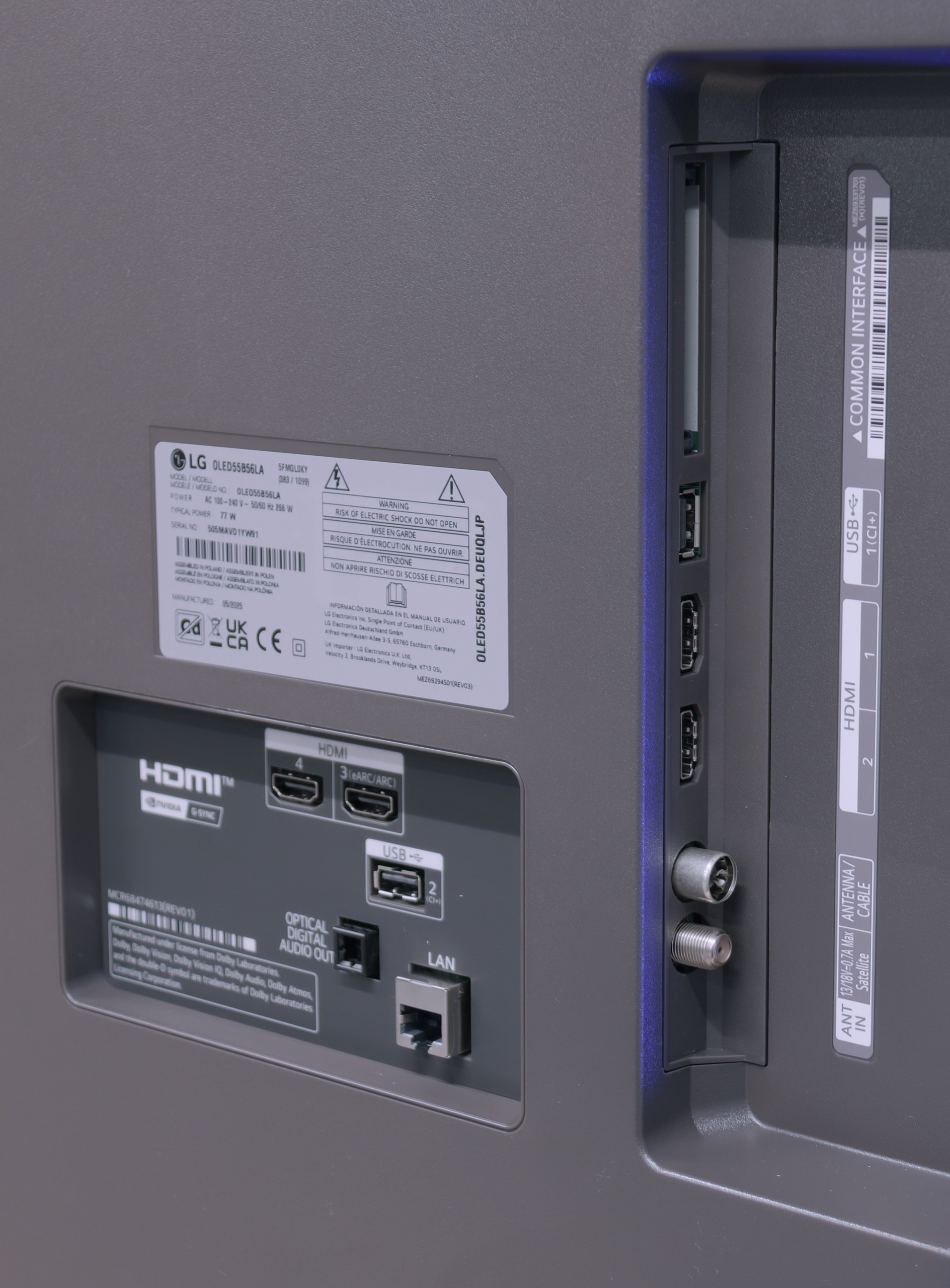
LG uses the well-known proprietary system WebOS, which has been around for many years. The system offers virtually all the essential applications, and those that are missing can be counted on one hand, such as CDA or KODI.
WebOS also provides the highly valued ability to perform operations using a cursor that appears when the remote control is moved. The convenience of such a feature is invaluable when entering queries or passwords for portals. WebOS, like most systems, also supports functions such as screen mirroring, AirPlay, voice search in Polish, and the ability to connect headphones via Bluetooth. On a more practical note, WebOS allows us to use both headphones and the TV speaker LG G4 simultaneously, which will certainly be a significant advantage for those with hearing disabilities. Among the more interesting features, particularly appreciated by sports fans, is the option to enable an alert for upcoming matches, ensuring that we never miss a broadcast. The home panel also deserves praise, allowing for control of all smart devices connected to the home network. For example, the end of a laundry cycle will be signalled by a notification in the top right corner.
In summary, the WebOS system, although less known and with some limitations compared to Android TV, offers stable and fast operation and supports most features that users might need. It is a solid solution for those looking for a simple and effective operating system in a television.
Functional Features
Even though the LG B5 is modern equipment, it hasn’t forgotten those who simply want to... watch television. No apps, no accounts, no logging in anywhere. We have built-in DVB-T2 tuners and the ability to record onto USB, with a clear and fast EPG guide. Is that not enough? There’s even a working teletext – for many, surely a relic, for others, a daily occurrence. A plus is also the option to turn off the picture and just keep the sound, which works great for listening to music. And if you want to watch quietly – you can easily pair Bluetooth headphones, without wrestling with settings and without delays. Everything works as it should.
SMART TV: webOS
The biggest distinguishing feature of the webOS system – still! – remains the way you control it. The Magic remote, which we get with the LG B5 (in our version B56 – the one without the numeric keypad), works like a magic wand. We point, click, select. And it simply... works. Intuitively, quickly, and without unnecessary clicking left and right. Added to this is the AI voice assistant – quite efficient. You can summon it directly from the remote and use your voice to search for content, change settings or switch sources. WebOS may not be the most "modern" system on the market, and built-in ads can be annoying, but when it comes to ease of use – especially with the Magic remote – it still stays one step ahead of the competition.
Playing files from USB
8.5/10
8.6/10
Supported photo formats:
Maximum photo resolution:

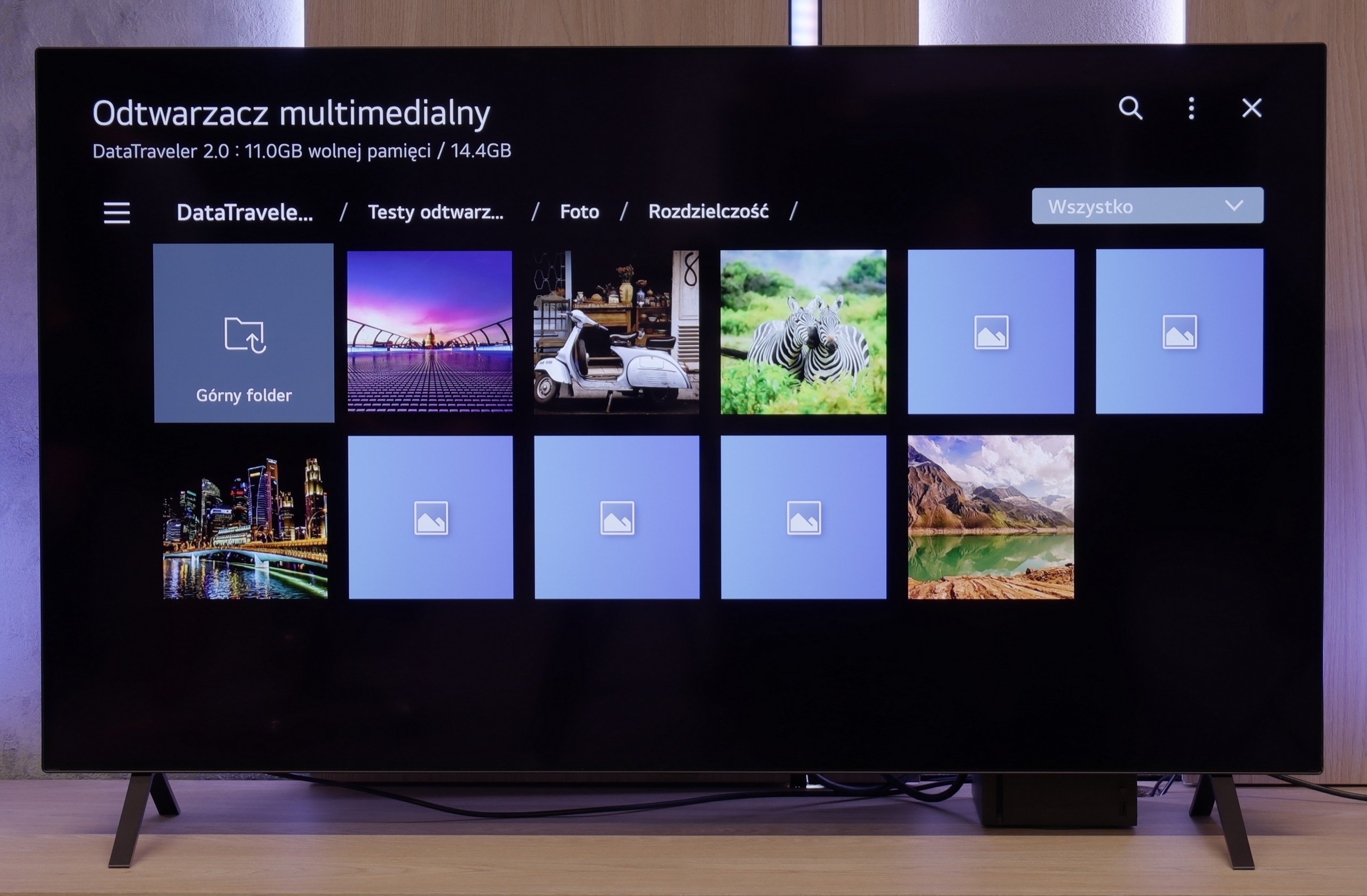
The default file player on the LG G4 performs quite well with most photos, although it's surprising to find a lack of several equally popular ones. It can successfully play videos recorded in virtually all the most popular formats, including Dolby Vision. The only codec that the G4 cannot play is H.266 VVC, although this is currently quite rarely used. However, it's important to note the supported photo formats, of which there are only two: JPEG and PNG. Users of Apple phones may feel disappointed by the lack of support for the HEIC format, which is the default format when taking photos. The remedy for this is to use the built-in AirPlay feature. Lastly, we should also mention the lack of support for TXT subtitles.
LG B5 handles USB files as it should. Most popular formats work seamlessly, and subtitles – even with Polish characters – are displayed correctly. You can comfortably play a movie from a USB drive or have a weekend slideshow of your holiday photos without worrying that something will go wrong. However, there was a surprise with files in HEIC format – that is, photos saved by Apple devices. While the LG C5 had no issues with them, the B5 stubbornly refused to cooperate and was unable to display them. A little hiccup that probably won’t affect everyone, but it’s worth knowing about.
Apps
8.7/10
8.7/10














































Sound
8.6/10
7/10
- Subjective sound quality:8.6/107/10
- Dolby Digital Plus 7.1:
- Dolby True HD 7.1:
- Dolby Atmos in Dolby Digital Plus (JOC):
- Dolby Atmos in Dolby True HD:
- DTS:X in DTS-HD MA:
- DTS-HD Master Audio:
The assessment of sound quality is always subjective. However, we must give credit to LG G4 for maintaining a fairly good level of sound clarity. The biggest drawback of the built-in audio system in the television is the low bass range. However, it’s important to look at this from a different perspective — anyone opting for this television will likely have a home theatre system. The key in this case will be broad support for audio codecs, including DTS-HD Master Audio and Dolby Atmos.
We didn't expect miracles – after all, the LG B5 doesn't have an advanced audio system, and its built-in speakers look... well, just like the majority of flat-screen TVs. And yet – it actually sounded quite nice. The dialogues are clear, the sound isn't booming, and during a quieter viewing, we didn't immediately feel the need to plug in a soundbar. It's just a shame that this year LG decided to cut something that worked in the previous generation. We're of course talking about support for DTS formats, which we won't find in the B5. If you have movies encoded in that format – you'll need to rely on an external player.


